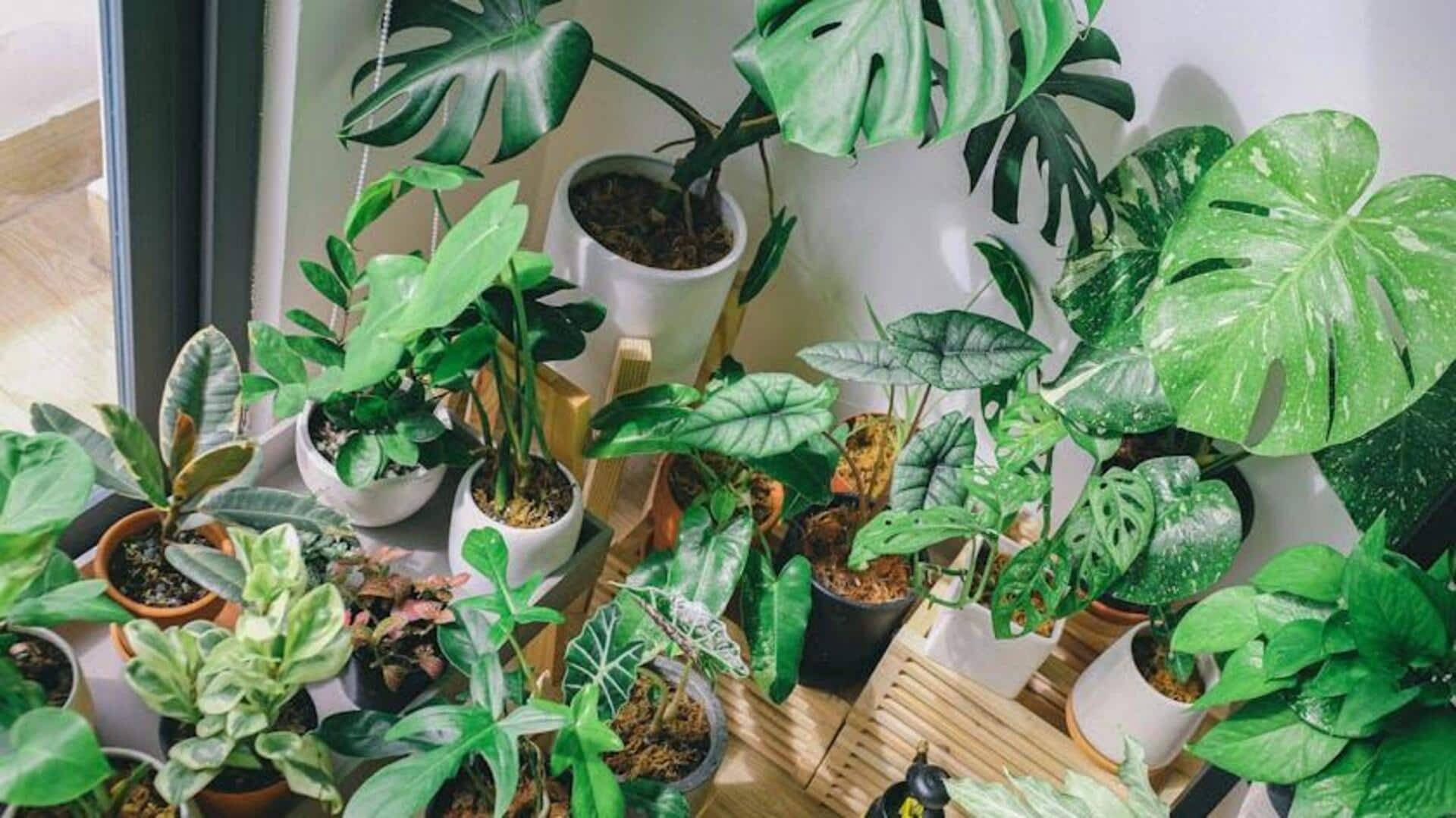
How to keep your indoor plants healthy
What's the story
Creating a thriving indoor garden is much more than just filling a room with plants. It's about knowing what they need and providing them with the right conditions to grow. Whether you're an expert plant parent or a novice, here are some essential tips to ensure your indoor greenery stays healthy and happy. Focusing on light, water, soil, humidity, and pest control can help you cultivate an environment where your plants will flourish.
Light management
Optimize light conditions
Indoor plants need appropriate light to photosynthesize well. Keep your plants near windows with indirect sunlight, or use artificial grow lights if natural light isn't enough. Different plants have different light requirements; some flourish in low-light conditions while others need bright, direct sunlight. Regularly rotate your plants to ensure even exposure and prevent them from leaning towards the light source.
Watering techniques
Water wisely
You would agree that proper watering is key to keeping indoor plants healthy. Overwatering leads to root rot, and underwatering makes them wilt. Check the moisture level of the soil before watering by inserting your finger about an inch deep into the soil; if it feels dry, it's time to water. Use pots with drainage holes to prevent stagnation at the bottom, and always empty excess water from saucers.
Soil selection
Choose quality soil
The right soil mix gives your indoor plants the nutrients they need and helps roots develop. Use potting mixes specially formulated for houseplants, as they provide good aeration and drainage properties. Do not use garden soil, as it may compact easily indoors and harbor pests or diseases that could harm your plants.
Humidity control
Maintain humidity levels
Many indoor plants are native to tropical areas, where humidity is high. To mimic those conditions indoors, try using a humidifier or keeping a tray of water near your plants. This adds moisture to the air through evaporation. Keeping multiple plants together can also help create a microenvironment. This environment has higher humidity around them.
Pest management
Monitor pests regularly
Indoor gardens aren't exempt from pests like aphids or spider mites, which can harm foliage if not dealt with overtime. Regularly check leaves, stems, and soil surface for signs of infestation like discolored spots, webbing, or tiny insects. If spotted early enough, use natural remedies like neem oil sprays instead of harsh chemical pesticides, which might hurt both humans and pets alike.